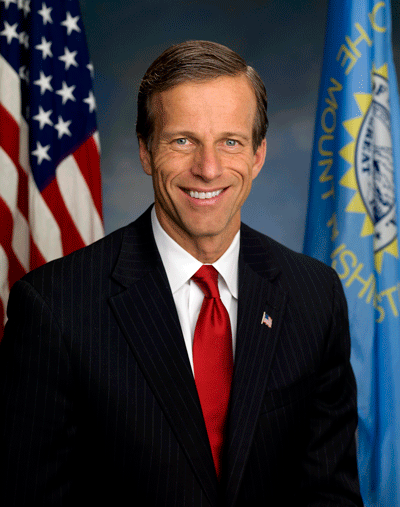

10 Years Since Winter Storm Atlas
By Sen. John Thune
Ten years ago, Winter Storm Atlas swept through western South Dakota. When it started, no one had any idea that it would be one of the most devastating snowstorms in the area’s history. Atlas dropped as much as 5 feet of snow in some areas. Wind gusts reached 71 miles per hour, and the storm devastated West River ranches.
Growing up in Murdo, we saw a lot of nasty weather, but Winter Storm Atlas was a storm unlike any other. Shortly after the storm cleared, I toured the area with then-Gov. Dennis Daugaard. It was heart-wrenching to see the impact on our state’s livestock industry. Tens of thousands of cattle, sheep, horses, and bison were killed. Much of the livestock that survived the storm were scattered miles from their pasture.
The Atlas storm brought the ferocity of Mother Nature to bear, but it also revealed the resilience and kindness of South Dakotans. Farmers and ranchers are independent, hard-working people. They are the best friends and neighbors you could ask for – the first to lend a helping hand and the last to ask for help. In the days and weeks after the blizzard, support came in from across the country. South Dakotans donated to the Rancher Relief Fund that provided millions of dollars in assistance to livestock producers, and producers from around the country donated their own livestock to help South Dakota ranchers rebuild their way of life.
When the storm hit, Congress was working on finalizing a farm bill, and I got right to work to make sure the bill would be done quickly and that the programs producers needed would be there for them. Winter Storm Atlas was a reminder that disaster can strike when you least expect it. In the 2008 farm bill, I coauthored the first standing livestock disaster programs of their kind. I worked to ensure these programs – the Livestock Forage, Livestock Indemnity, and Emergency Livestock Assistance programs – were continued and strengthened in the 2014 and 2018 farm bills.
Thankfully a storm as devastating as Atlas hasn’t struck again, but South Dakota’s farmers and ranchers have certainly seen their fair share of extreme weather in the last decade. Weather is just one aspect of the uncertainty and challenges that farmers and ranchers face. The livestock programs I helped design are an integral part of the farm safety net that farmers and ranchers depend on when challenges arise. As Congress considers another farm bill this year, I’m working to strengthen these programs to ensure farmers and ranchers can weather any storm that comes their way.
Agriculture is South Dakota’s number-one industry. South Dakota farmers and ranchers work hard every day, and they face uncertainty and a myriad of challenges to deliver a reliable and affordable food supply to the nation and the world. South Dakota’s producers are on my mind every day in the U.S. Senate, and I’ll continue working to ensure farm policy supports them and the important work they do.
###
